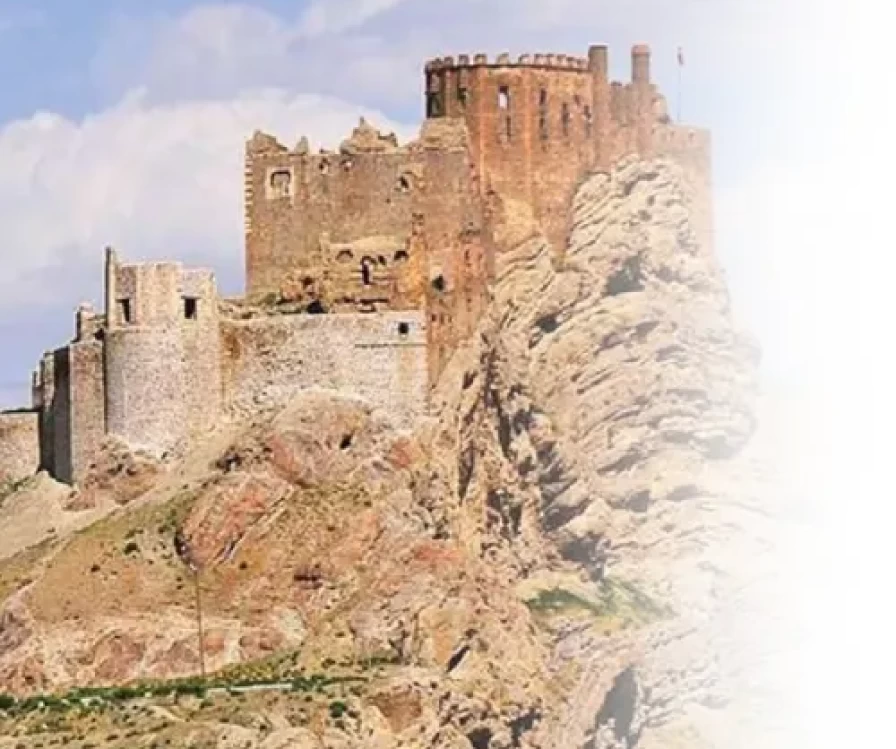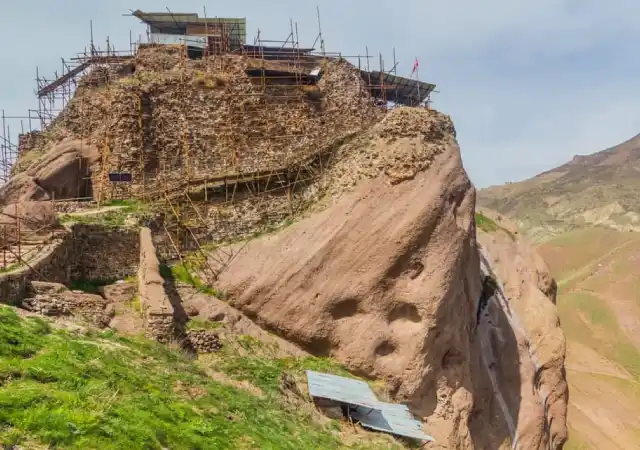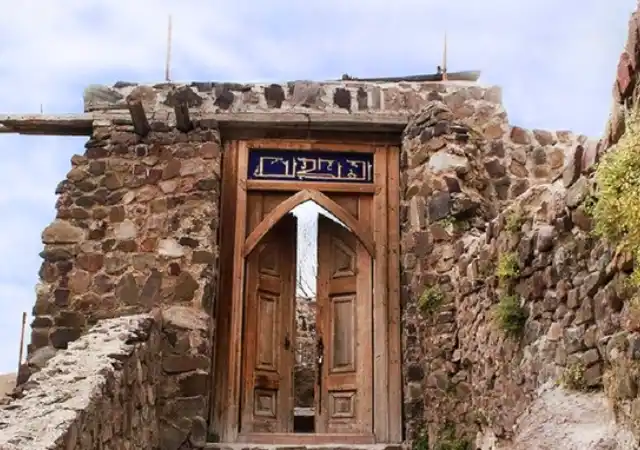
Alamoot Castle





Alamut Castle
Alamut Castle, meaning "Eagle's Nest," is one of the most important and largest historical fortresses in Iran, although much of it has been destroyed over time. Located in the Alamut region of Qazvin, northeast of the village of Gazderkhan, it is situated 105 kilometers from Qazvin. The castle is built on a rocky height of 2,163 meters above sea level and 200 meters above the surrounding lands. The fortress spans an area of 20,000 square meters, or two hectares, making it unique in its kind. The surrounding rocks are red and gray, stretching from the northeast to the southwest. Alamut Castle is perched on a steep cliff, where several buildings can be constructed at its summit. This location has strategic importance, and access to it is quite difficult. The inhabitants of this region were known to be fierce and brave, and the castle remained untouched for centuries. Alamut Castle was the stronghold of Hassan Sabbah, the founder of the Ismaili dynasty of Alamut. In 483 AH (1090 AD), he easily captured the castle and took control of it. During this time, amidst the internal wars of the Seljuks, he expanded the castle, reinforced its defenses, and constructed specialized water reservoirs and extensive storage facilities, ensuring a long-term supply of water and provisions for the castle. It was during this period that the Seljuk army, commanded by Amir Yurntash, attacked the castle, leading to a prolonged battle with the Seljuks.
The castle is built on a massive rock, with steep cliffs on all sides. The only entrance to the castle is accessible from the end of the eastern wing, with the mountain of Houdokan overlooking it from a considerable distance. This castle is considered one of the most important tourist attractions in Alamut and Qazvin province. This stronghold served as the central base for Hassan Sabbah and other leaders of the Ismailis (Hashshashins). Due to its harsh geographical conditions, the fortress was remote from the access of the Caliphs of Baghdad and their armies, making it very difficult, if not impossible, to reach or occupy. Today, a large part of the castle has been destroyed. This historical site was registered in the list of national monuments of Iran in 1381 (2002 AD).
Alamut Castle, or Hassan Khan Castle, consists of two sections: the western and eastern parts. The western section, which is taller, measures 120 meters in length and varies between 10 to 35 meters in width. The eastern wall of the upper summit, or the main castle, is made of stone and gypsum mortar and is less damaged than other parts. It is about 10 meters long and 4 to 5 meters high. In the southern part, a room has been carved into the rock, which served as a guard post. To the east of this room, there is a wall 2 meters high, with its base carved into the rock and built with gypsum stone, while its facade is made of brick. In the northwest side of the upper castle, two rooms have also been carved into the mountain.
In the first room, a small water pit has been created, which replenishes itself whenever water is drawn from it. This pit likely connects to the southern pool. At the base of this room, the northern wall of the castle extends 12 meters in length and 1 meter in width, located lower than the castle itself, leading to a steep cliff. In the southwestern part of this section, a pool measuring 8 meters in length and 5 meters in width has been carved into the rock, which still fills with water due to winter and spring rains. In the western corner of this pool, an ancient vine tree still thrives.
The surrounding wall of the castle stands 8 meters high and runs parallel to the main wall, with a thickness of up to 2 meters. Since a large number of people resided in the castle throughout the year, they required a plentiful water supply. The builders ingeniously constructed water reservoirs and directed water from distant springs into these reservoirs. The water for the castle came from the Koldar spring, located at the northern foot of the castle. The materials used in various parts of the castle include stone, gypsum mortar, brick, tiles, and ceramic coverings with a diameter of 10 centimeters. The bricks used in the construction are square, measuring 21 centimeters on each side and 5 centimeters thick, crafted from local clay. Wooden frames were used horizontally within the walls to support them and connect the front parts of the towers to the back sections. To the west of the castle, there is an ancient cemetery known as Asbe Kaleh Chal, and on the adjacent hill, the remains of several brick kilns can be seen. According to the book "Nuzhat al-Qulub" by Hamdollah Mostofi, the year of the castle's construction is mentioned as 246 AH (860 AD), coinciding with the caliphate of Al-Mutawakkil, the Abbasid caliph.
The only entrance to Alamut Castle is located at the northeastern end, a few meters below the eastern tower of the fortress, which is overseen by the mountain of Houdokan from a relatively far distance. In this area, a tunnel has been carved into the rock, measuring 6 meters in length, 2 meters in width, and 2 meters in height. On the southern slope of the castle, a trench approximately 50 meters long and 2 meters wide has been dug, filled with water coming from inside the castle to prevent any potential infiltration from that front. On other slopes, wherever there was a risk of attackers climbing, trenches were dug, and the walls above them were built at an angle to limit any passage.
In 654 AH (1256 AD), under the orders of Hulagu Khan, the Mongols set fire to this summit, completely destroying it. Subsequently, it was used as an exile place and sometimes as a prison from its remnants. During the Qajar era, numerous excavations were conducted in search of treasure within the castle, ultimately leading to its complete destruction. This castle is also known as Hassan Sabbah's Castle. In 483 AH, it was captured by Hassan Sabbah, and its fame largely stems from his military and security activities there. Undoubtedly, Hassan Sabbah's Castle, or Alamut Castle in Qazvin, is recognized as one of the most important and historical fortresses in Iran and Qazvin. Due to its proximity to both Tehran and Qazvin, it has become one of the main historical attractions around these two cities, drawing many tourists for day trips.
The best season to visit Alamut Castle is during spring and summer, as the castle is built in mountainous terrain and is covered in ice and snow during winter, posing challenges for visitors. In spring and summer, this mountainous area welcomes numerous tourists from all over the country who travel to Alamut for a visit. We hope that as the Sana Persian team, we can plan and provide you with a delightful journey to Iran, Qazvin, Alamut, and Alamut Castle. Looking forward to that day in the near future!
Contact Us
+989054577261